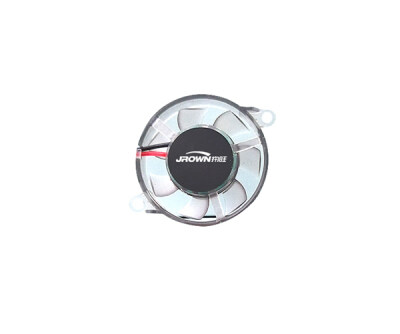Cooling fans can be divided into many types based on their air supply form, such as axial flow, mixed flow, centrifugal, etc. And according to its different forms of electricity consumption, it can be divided into DC and AC. What exactly is a DC cooling fan, and what are the differences between a DC cooling fan and an axial cooling fan? Below, the editor will provide you with detailed answers:
Simply put, a DC heat dissipation fan converts electrical energy into mechanical energy through DC voltage and electromagnetic induction, thereby driving the rotation of the fan blades to achieve heat dissipation. The DC cooling fan is operated using a DC power supply! The voltage of the DC power supply used must be consistent with the working voltage marked on the fan. The battery is a DC power source. If it is used to drive a DC fan, in addition to charging, it is also necessary to check whether the voltage of the battery is consistent with the working voltage of the fan. If it is not consistent, a DC/DC converter should be used to change the voltage to be consistent.

The principle of DC cooling fan operation is based on the right-hand rule of the ampere. When a conductor passes through an electric current, a magnetic field will be generated around it. If this conductor is placed in another fixed magnetic field, it will generate suction or repulsion, causing the object to move. A rubber magnet pre filled with magnetism is attached to the blade of the DC cooling fan. Surrounding the silicon steel sheet, two sets of coils are wound around the axis, and a Hall sensing component is used as a synchronous detection device to control a set of circuits that rotate the two sets of coils wound around the axis.
The speed measurement signal of the DC cooling fan is generally output from a three lead plug, with yellow and black wires representing+12V power and ground, respectively. The other color of the wire is the speed signal output wire. It should be noted that the third lead of some three lead DC cooling fans is not a speed measurement signal output line, but a speed control signal line, which inputs a speed control signal to the DC fan motor. So far, there are two types of monitoring methods for the fan itself: alarm sensor and speed sensor. The alarm sensor can provide an alarm signal when the fan speed is below a certain threshold value, and the speed signal output can achieve real-time monitoring of the fan speed.
And axial flow cooling fan, also known as axial flow fan. Mainly suitable for exhaust in places such as dust and gravel fields; Medium sized axial flow fans are mainly suitable for indoor ventilation and heat removal, such as grain warehouses; Small axial fans are mainly suitable for ventilation and heat dissipation of mechanical equipment, such as electrical cabinets. When an axial flow fan operates, the blades push the air to flow in the same direction as the shaft, so it is called an axial flow fan.
Copyright © 2024 Dongguan Juwang Technology Co., Ltd 粤ICP备2022025395号
privacy policyThe Sakawan website uses cookies to improve and personalize your experience and to ensure that the website functions properly. Your data will not be stored on our website after it is closed. By using this website, you consent to the use of cookies. more information about our privacy policy. Thank you!